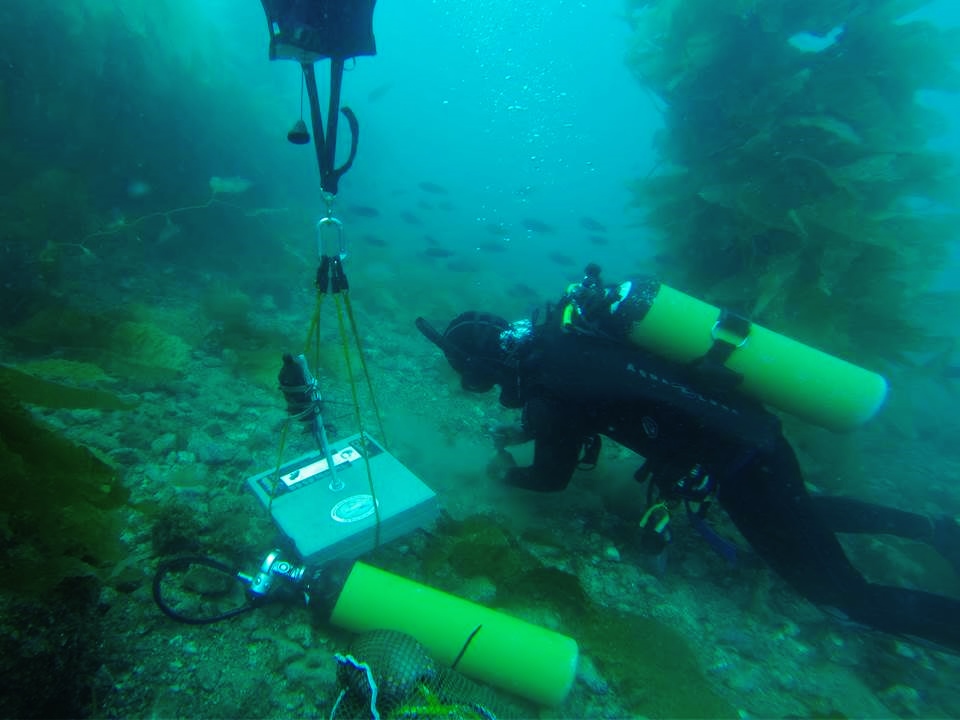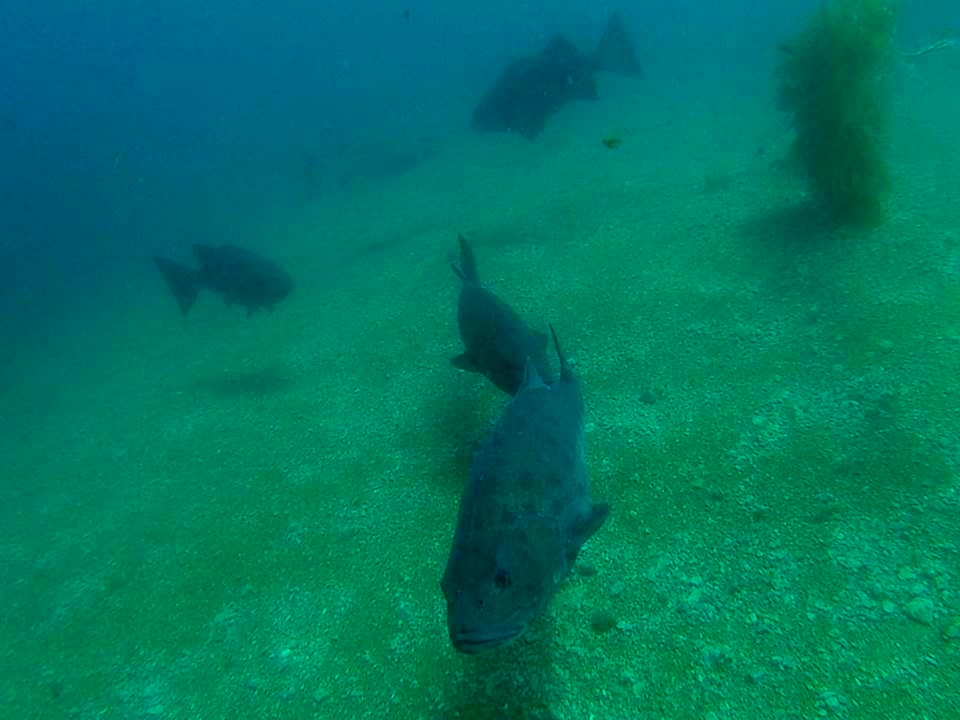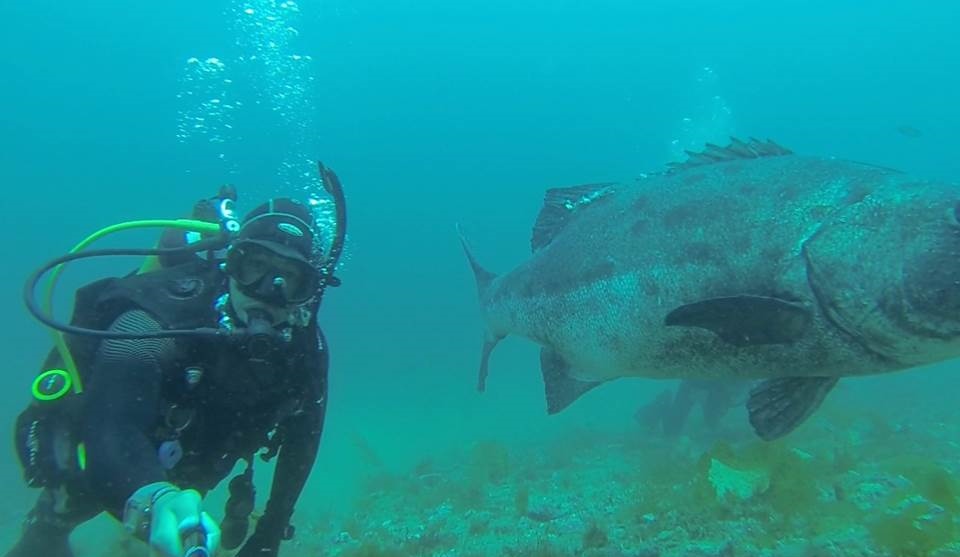USC Wrigley Institute – wrigley.usc.edu
By: JR (Brian) Clark
As a Wrigley Institute Fellow this summer, my graduate research focuses on the reproductive behavior of the giant sea bass. My project has two parts: 1) describing their courting and spawning behaviors and 2) identifying their residency at spawning sites at Catalina Island.
The giant sea bass, Stereolepis gigas, is a part of the wreckfish family and endemic to the northeast Pacific. It is the only megacarnivore found in the southern California kelp forest, which means that these fish serve an important role in regulating and sustaining biodiversity within their ecosystem.
Unfortunately, giant sea bass are listed as critically endangered on the IUCN Red List due to extreme fishing pressure during the early 1900’s. Although sightings have become more common, we believe their numbers still have not returned to historic levels. Their courting and spawning behaviors have also not been characterized. This data, coupled with knowing how many there are and how long they stay in their spawning aggregations (groups), are important to help make proper stock assessments and predictions about their recovery.
How do we study this? Along with my dive buddy Parker House (another 2014 Wrigley Institute Fellow), we are running transects using underwater scooters equipped with lasers and a camera. This allows us to accurately measure the size and count the number of giants we see on each dive at the spawning site.
We are also using long-term hydrophones to measure the amount of sound that they produce. This can be used as a non-invasion alternative to tagging, which also allows us to estimate their density over long periods of time.
During dives when we come upon aggregations of giant sea bass, we take video recordings of any behavior they are exhibiting and later analyze the videos to quantify the behaviors seen.
With this study we hope to promote awareness and understand the basic biology of giant sea bass, as well as develop a non-invasive way to monitor and identify their populations.
JR is a 2014 Wrigley Institute Summer Fellow and a graduate student at California State University, Northridge, in the Department of Biology.






